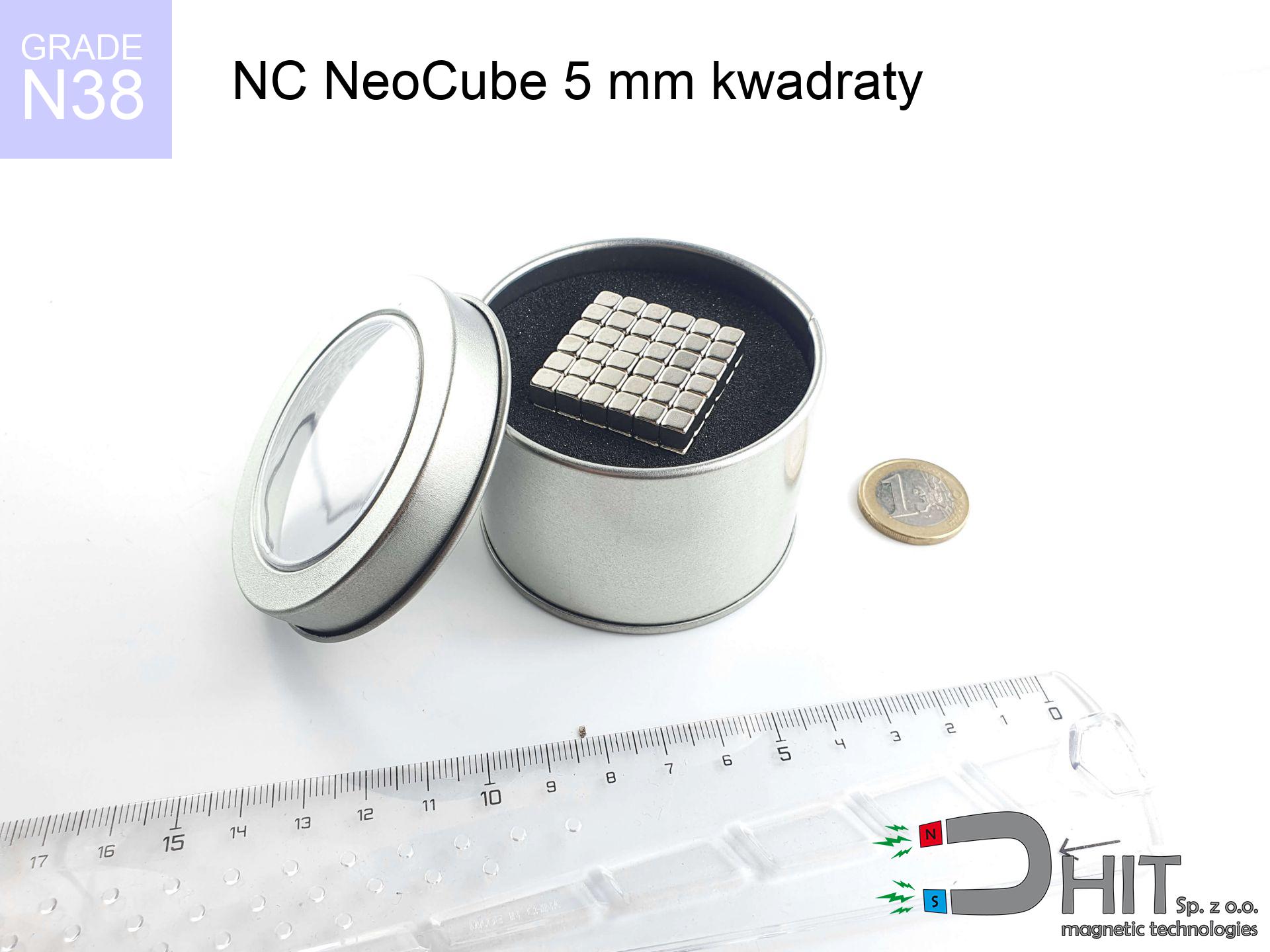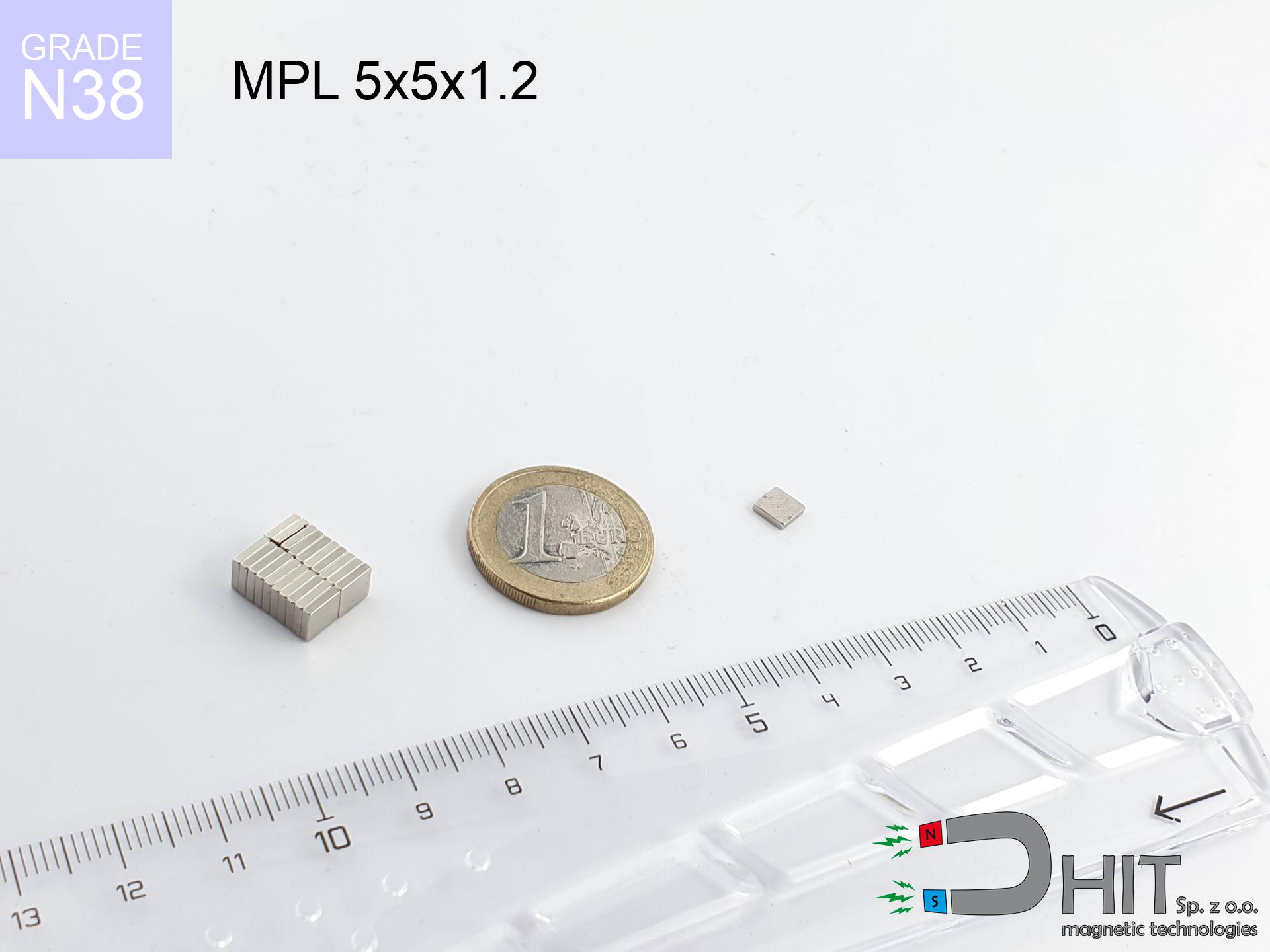NC NeoCube 5 mm kwadraty / N38
neocube
catalog number 120227
GTIN: 5906301812661
magnetizing direction
↑ axial
max. temperature
≤ 80
°C
catalog number 120227
GTIN: 5906301812661
magnetizing direction
↑ axial
max. temperature
≤ 80 °C
49.99 ZŁ gross price (including VAT) / pcs +
40.64 ZŁ net price + 23% VAT / pcs
bulk discounts:
need more quantity?Want to bargain?
Give us a call tel: +48 22 499 98 98 or write through contact form on the contact page. You can check the strength as well as the shape of neodymium magnets in our magnetic mass calculator magnetic calculator
Orders placed by 2:00 PM will be shipped on the same business day.
Specification: neocube NeoCube 5 mm kwadraty / N38 ↑ axial
Magnetic properties of the material N38
Physical properties of sintered neodymium magnets Nd2Fe14B
List recommended items
Advantages and disadvantages of neodymium magnets NdFeB.
Apart from immense strength, neodymium magnets have the following advantages:
- They do not lose strength over time - after approximately 10 years, their power decreases by only ~1% (theoretically),
- They are highly resistant to demagnetization by external magnetic field,
- In other words, thanks to the shiny coating of nickel, gold, or silver, the element acquires an aesthetic appearance,
- They have exceptionally high magnetic induction on the surface of the magnet,
- Thanks to their high temperature resistance, they can operate (depending on the shape) even at temperatures up to 230°C and above...
- Due to the option of accurate forming or adaptation to individual needs – neodymium magnets can be produced in many variants of shapes or sizes, which enhances their versatility in applications.
- Significant importance in modern technologies – are used in computer drives, electric drive mechanisms, medical devices or other modern machines.
Disadvantages of neodymium magnets:
- They are prone to breaking as they are fragile when subjected to a powerful impact. If the magnets are exposed to impacts, we recommend using magnets in a steel housing. The steel housing in the form of a holder protects the magnet from impacts and simultaneously increases its overall strength,
- High temperatures can reduce the power of neodymium magnets. Typically, after heating above 80°C, most of them experience a permanent loss in strength (although it is dependent on the form and size). To prevent this, we offer special magnets marked with the symbol [AH], which are highly resistant to high temperatures. They can operate even at temperatures up to 230°C, making them an ideal solution for applications requiring high-temperature operation,
- Due to their susceptibility to corrosion in a humid environment, we recommend using waterproof magnets made of rubber, plastic, or other moisture-resistant materials when using them outdoors,
- Limited ability to create threads or complex shapes in the magnet - the use of a housing is recommended - magnetic holder
- Health risk associated with microscopic parts of magnets can be dangerous, if swallowed, which becomes significant in the aspect of protecting young children. Additionally, miniscule components of these devices can hinder the diagnostic process after entering the body.
Be Cautious with Neodymium Magnets
Magnets should not be treated as toys. Therefore, it is not recommended for youngest children to have access to them.
Neodymium magnets are not toys. Do not allow children to play with them. In the case of swallowing multiple magnets simultaneously, they can attract to each other through the intestinal walls. In the worst case scenario, this can lead to death.
Neodymium magnets are fragile and can easily break and shatter.
Neodymium magnets are highly delicate, and by joining them in an uncontrolled manner, they will crack. Neodymium magnets are made of metal and coated with a shiny nickel surface, but they are not as hard as steel. At the moment of collision between the magnets, sharp metal fragments can be dispersed in different directions.
Avoid contact with neodymium magnets if you have a nickel allergy.
Studies show a small percentage of people have allergies to certain metals, including nickel. An allergic reaction often manifests as skin redness and rash. If you have a nickel allergy, try wearing gloves or avoid direct contact with nickel-plated neodymium magnets.
Neodymium magnets are primarily characterized by their significant internal force. They attract to each other, and any object that comes in their way will be affected.
Magnets will crack or crumble with careless joining to each other. You can't move them to each other. At a distance less than 10 cm you should have them extremely strongly.
Make sure not to bring neodymium magnets close to the TV, wallet, and computer HDD.
Magnetic fields generated by neodymium magnets can damage magnetic storage media such as floppy disks, credit cards, magnetic ID cards, cassette tapes, video tapes, or other similar devices. In addition, they can damage televisions, VCRs, computer monitors, and CRT displays. You should especially avoid placing neodymium magnets near electronic devices.
Neodymium magnets can become demagnetized at high temperatures.
Despite the general resilience of magnets, their ability to retain their magnetic strength can be influenced by factors like the type of material used, the magnet's shape, and the intended purpose for which it is employed.
Neodymium magnets are over 10 times stronger than ferrite magnets (the ones in speakers), and their strength can shock you.
Familiarize yourself with our information to correctly handle these magnets and avoid significant injuries to your body and prevent disruption to the magnets.
Neodymium magnets are not recommended for people with pacemakers.
In the case of neodymium magnets, there is a strong magnetic field. As a result, it interferes with the operation of a heart pacemaker. However, if the magnetic field does not affect the device, it can damage its components or deactivate the device when it is in a magnetic field.
Dust and powder from neodymium magnets are highly flammable.
Do not attempt to drill into neodymium magnets. Mechanical processing is also not recommended. If the magnet is crushed into fine powder or dust, it becomes highly flammable.
Keep neodymium magnets away from GPS and smartphones.
Intense magnetic fields generated by neodymium magnets interfere with compasses and magnetometers used in navigation, as well as internal compasses of smartphones and GPS devices.
Please see the article - What danger lies in neodymium magnets? You will learn how to handle them properly.




![magnetic separator 18x225 [2xM5] / N42 magnetic separator 18x225 [2xM5] / N42](https://cdn3.dhit.pl/graphics/products/sm-18x225-2xm5-wiv.jpg)



